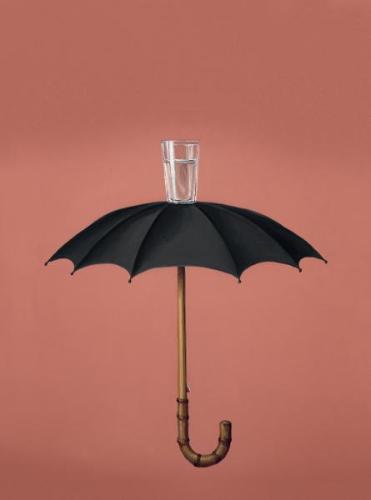 |
| René Magritte, Les Vacances de Hegel, 1958 |
Even though there are various versions of Ceci n’est pas une Pipe and the famous painting is the Pompidou’s focus for a room devoted to the discrepancy between words and things, Magritte. La Trahison des Images convincingly demonstrates that Magritte was not only prolific, but that he did so much beyond this one canonical image. The diversity of images and concerns on display showed just how limited is or was my knowledge of Magritte’s painting (namely its Surrealist sympathies). The thrill of the exhibition is also made possible by the fact that so many of the works have been lent by private collectors, bringing a wealth of unknown images to the French public.
| René Magritte, La Trahison des Images (Ceci n'est pas une pipe), 1929 |
The exhibition is divided into five rooms, each of which is themed. For once the themed organization made sense. Although such curatorial organization usually irritates me, what makes it work for Magritte’s paintings is that his thinking is complex and varied from the start. There is not a chronological development to be traced in thinking or painting across his career. From the beginning he is preoccupied with the representation and expression of philosophical ideas that engage painting and aesthetics. Similarly, as a painter, he doesn’t develop in the way that others do. Indeed, it was interesting to see that even if the works are not particularly painterly, they are always well-painted, and stay that way throughout his career. The exhibition shows that Magritte had a keen sense of composition, color and the behavior of paint on a canvas. This also makes the works somewhat awkward to look at. Before the paintings we are looking at visual puzzles and visual rhymes. So it’s not as though we are looking at a beautiful painting whose magnificence can be contemplated. Nor does anything reveal itself over time. What we see is what we get. Though what we see is rarely transparent.
| René Magritte, Variante de la Tristesse, 1957 |
The four rooms, Words and Images, the Invention of Painting, the Allegory of the Cave, Curtains and Trompe l’Oeil/Composite Beauty each begin from the premise that Magritte was working in response to issues of aesthetics. The exhibition presents his work as always being in the pursuit of the purpose of art and the primacy of the image over the word, or at the very least, equality. He is also preoccupied with the nature of representation, of the relationship between representation and reality, art and nature. In so many of the paintings, the two are indistinguishable. In a number of them, we see the sea, a landscape, a whole world as it exists behind the painting in the image, and across the same painting within the painting. Is the continuity mistaken? Or is the continuity just the point? That’s where the game begins.
| René Magritte, La Lampe philosophique, 1936 |
In spite of the references to Plato, Pliny, classical perspective and representations of the self, Magritte is a painter who is absolutely of his time. Magritte’s conceptions of things and the relationship of painting to the world, his conception of art and representation, of women and the emptiness of their depiction in painting, all of these are truly modern. His interest in still life, the fascination with frames that double as entry ways to the (deception of the) visual world—picture frames, door frames, the abyss beyond/behind the painting and the door—all of which double as the surface of the painting, are modern because they have no interest in a compliance with everyday reality. In addition, all of the relationships he represents are shattered: that between the surface and the value of painting, the object and its image, art and nature, the self and its reflection which, in turn, doubles as the model and the portrait, and the list goes on. When we enter into Magritte’s world of doubt, uncertainty, and the setting free of reason to assume philosophical logic, it feels like nothing is quite as it should be. This, despite its sealed containment on a canvas, within the four sides of a frame.












